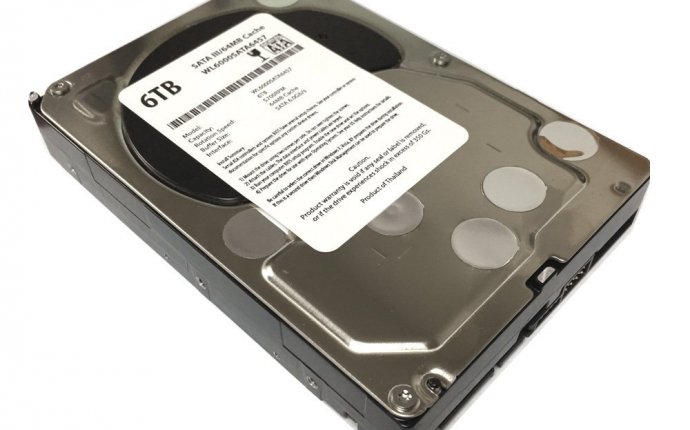
tools for repairing computers
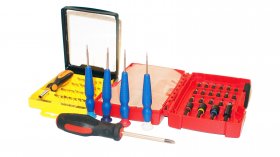 There’s an old saying apropos to building a new PC or upgrading an old one: “Use the right tool for the right job.” Sure, you could use a butter knife to loosen a screw, or a pair of pliers to tighten a motherboard stand-off, but it won’t make the job go any smoother, and you can bet it might do some harm. Using the right tool for any given job simply makes the job easier, and it usually improves the ultimate quality of the finished product.
There’s an old saying apropos to building a new PC or upgrading an old one: “Use the right tool for the right job.” Sure, you could use a butter knife to loosen a screw, or a pair of pliers to tighten a motherboard stand-off, but it won’t make the job go any smoother, and you can bet it might do some harm. Using the right tool for any given job simply makes the job easier, and it usually improves the ultimate quality of the finished product.
Every system builder needs a number of tools to complete any PC build or upgrade with the efficiency and precision of a surgeon. Some of the tools will be obvious, others less so.
Screwdrivers and nut drivers
It’s best to have numerous screwdrivers or a bit-driver and multiple bits on hand to accommodate any type of nut or screw.
For the vast majority of PC builds and upgrades, a basic No. 2 Phillips screwdriver will be the only tool you’ll need. As you start working with more diverse hardware and accessories, or if you delve into the warranty-voiding world of PC modifications, you'll need different-size screwdrivers and nut drivers.
I keep an array of screwdrivers on hand, as well as a bit-driver and an assortment of magnetic bits. I also like to have a small electronics toolkit handy, on the off chance that I’ll need to disassemble a drive or other accessory that’s held together with a less-common type of screw. Most small electronics toolkits will feature Allen (hex), Torx, Phillips, and flat-head bits. Another screw type that’s becoming more common is the five-pointed Pentalobe, which is used on some Samsung SSDs and mobile devices.
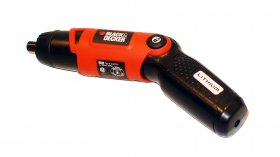 If you’re constantly building and upgrading systems, it may be worth investing in a power screwdriver. I use one when working with larger screws that are less likely to strip, like the ones used to secure a case’s side panel or when mounting drives.
If you’re constantly building and upgrading systems, it may be worth investing in a power screwdriver. I use one when working with larger screws that are less likely to strip, like the ones used to secure a case’s side panel or when mounting drives.
Low-cost power screwdrivers are available, but it’s typically the more expensive offerings that are best suited to PC-building. Look for a model that has an adjustable clutch and a handle that can flip to different positions. The adjustable handle will make it easier to squeeze into tight spaces, and the adjustable clutch will reduce the likelihood of stripping screws or mounts.
Pliers, cutters, and strippers
A power screwdriver will save your forearms from a ton of abuse, especially if you have multiple systems to build.
I’m finicky when assembling systems. I hate to leave anything inside a rig when I know it won’t be used. Unfortunately, it’s becoming increasingly common to find extra connectors dangling inside some cases (when was the last time you used an AC’97 digital-audio connector?), and many cooling fans have both 3- and 4-pin power connectors attached (you’ll need one or the other, not both). Removing unused connectors not only cleans things up, it also minimizes confusion for less-savvy upgraders. To remove those connectors, I like to use a small wire cutter to snip any wires attached to the connector. Wire cutters are also handy for snipping excess nylon from zip ties and other types of tie-downs.
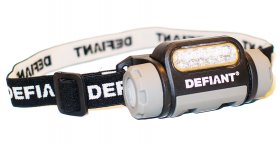 A good wire stripper is immensely useful any time you want to do more advanced electrical or wiring modifications. I can’t count the times I’ve swapped out a floppy-drive power connector on a cheap power-supply unit (PSU) when I’ve needed an additional SATA power connector. A pair of needle-nose pliers or long tweezers is ideal for picking up dropped screws and grabbing small connectors or wires to manipulate them in tight spaces.
A good wire stripper is immensely useful any time you want to do more advanced electrical or wiring modifications. I can’t count the times I’ve swapped out a floppy-drive power connector on a cheap power-supply unit (PSU) when I’ve needed an additional SATA power connector. A pair of needle-nose pliers or long tweezers is ideal for picking up dropped screws and grabbing small connectors or wires to manipulate them in tight spaces.
Let there be light!
A headlamp or adjustable clip-on flashlight can be invaluable when building a system, especially one that has a dark-colored interior.
A good head-mounted lamp or adjustable clip-on light is incredibly useful when building or upgrading a system. I know this seems obvious, but it’s often overlooked.
Many of today’s more popular cases have black or dark-colored interiors, which can make it difficult to spot small screws and other components unless you’re working in a perfectly lit room (and we both know those don’t exist). Do yourself—and your eyes—a favor and spring for a head-mounted lamp or other small, adjustable light.
PSU Tester and Multimeter
A good multimeter and a power-supply tester can save countless hours of troubleshooting when tracking down electrical or wiring-related problems.
Few things are more frustrating than painstakingly assembling a system, closing it up, pressing the power button, and—finding that nothing happens. If you don’t have a power-supply tester or multimeter on hand, you might spend hours troubleshooting and swapping out components until you stumble across the culprit.
If you do have one of these devices, it’ll take only seconds to ensure that your power supply is in good working order, that voltage is being output properly, and that simple components, such as the power switch, are functioning. On numerous occasions I’ve encountered systems that wouldn’t power on because of a defective power switch.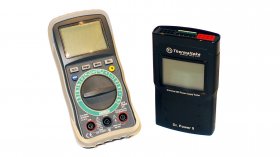 With a mulitmeter, it’s a simple matter of testing for continuity.
With a mulitmeter, it’s a simple matter of testing for continuity.
Thermal-interface material
You’ll want to keep a quality thermal paste on hand for those times when you need to reseat a heat sink or simply want to replace an inferior thermal-interface material.
It’s essential to apply a fresh layer of thermal paste anytime you mount or reseat a heat sink. This is the best means of ensuring that heat transfers from the processor to the heat sink, where it can be dissipated by a cooling fan or water block. Resist the temptation to reuse whatever's there—that material has done its job. Scrape or scrub it off (isopropyl alchohol and a paper towel will help) and apply a fresh coat. Thermal paste costs next to nothing compared to the component it’s intended to protect.
I like to keep two types of thermal paste on hand: A silver-based paste for high-performance applications, and a ceramic-based or other non-electrically-conductive paste, for applications where there may be electrical contacts or other surface-mounted components exposed.
Straps, zip ties, and tie-downs
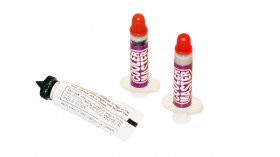 Adhesive tie-downs, zip ties, and Velcro straps will go a long way toward ensuring a neat and tidy wiring job.
Adhesive tie-downs, zip ties, and Velcro straps will go a long way toward ensuring a neat and tidy wiring job.
Effective cable management is paramount to a clean and cool-running system. But you can’t simply will the rat’s nest of wires and cables inside a typical system into place. You’ll need a variety of straps, adhesive tie-downs, and zip ties, along with a dollop of creativity and patience.
I always keep a tub of nylon zip ties of various sizes and colors on hand, in addition to a roll of thin Velcro straps. Most cases will have locations to tie everything down; adhesive tie-downs come in handy for those that don’t.
PC cleanup
Cotton swabs, micro-fiber cloths, isopropyl alcohol, and some canned air should be all that’s necessary for the vast majority of PC-cleaning tasks.
Whether you’re working with a brand-new pile of parts or are refurbishing an old system, keep a collection of cleaning materials in your toolbox. For the vast majority of jobs, cotton swabs, microfiber cloths, and canned air are all I need to clean up the fingerprints, dust, and other crud that builds up inside a PC. As mentioned earlier, you should also keep some isopropyl alcohol and paper towels on hand to clean up old thermal paste.
Other tools and accessories that PC builders use include antistatic wrist straps, rotary tools, spare screws in several sizes, and clamps, just to name a few. If there’s something you find invaluable when building or upgrading systems, we’d love to hear about it. Please give us your feedback in the comments below.









